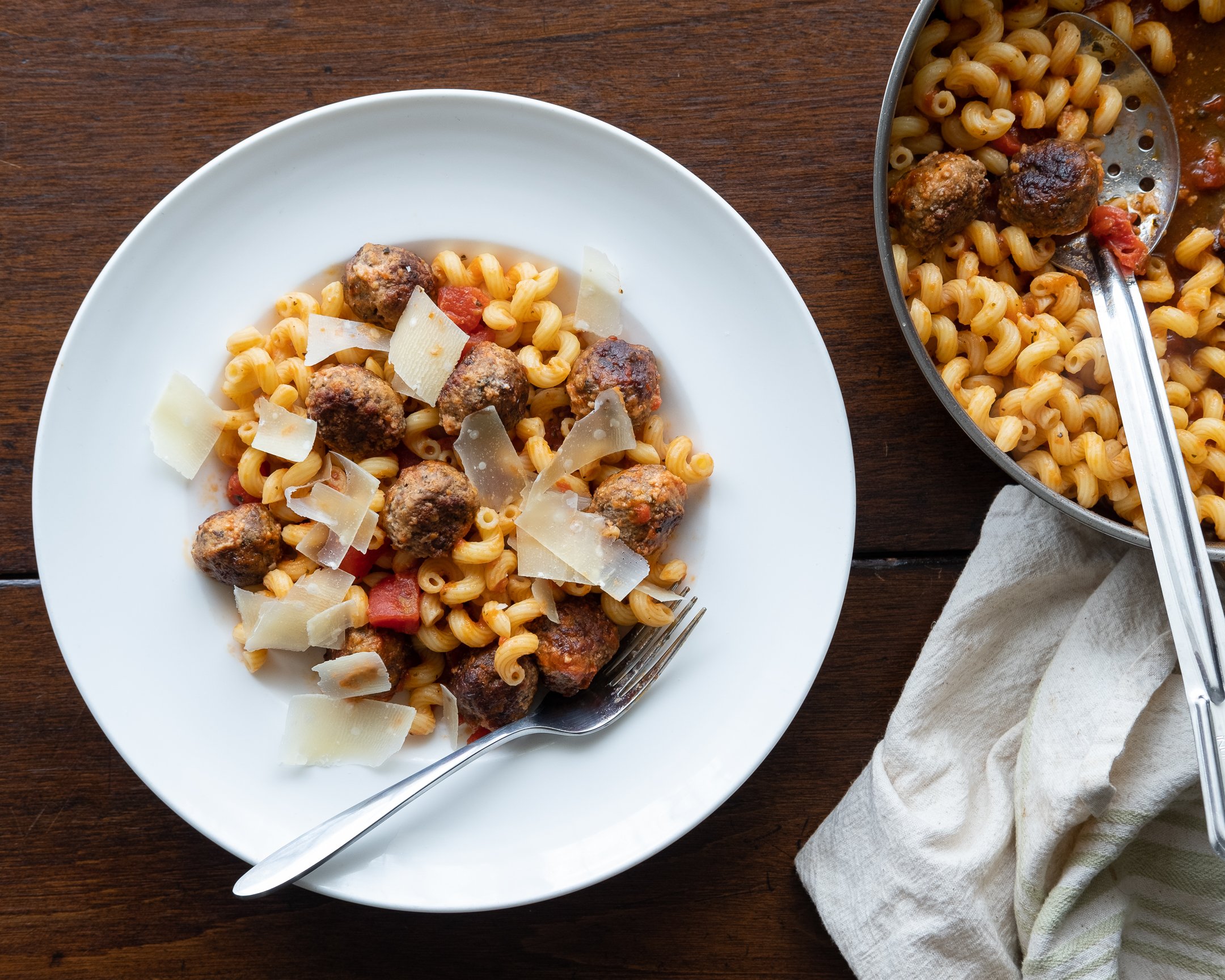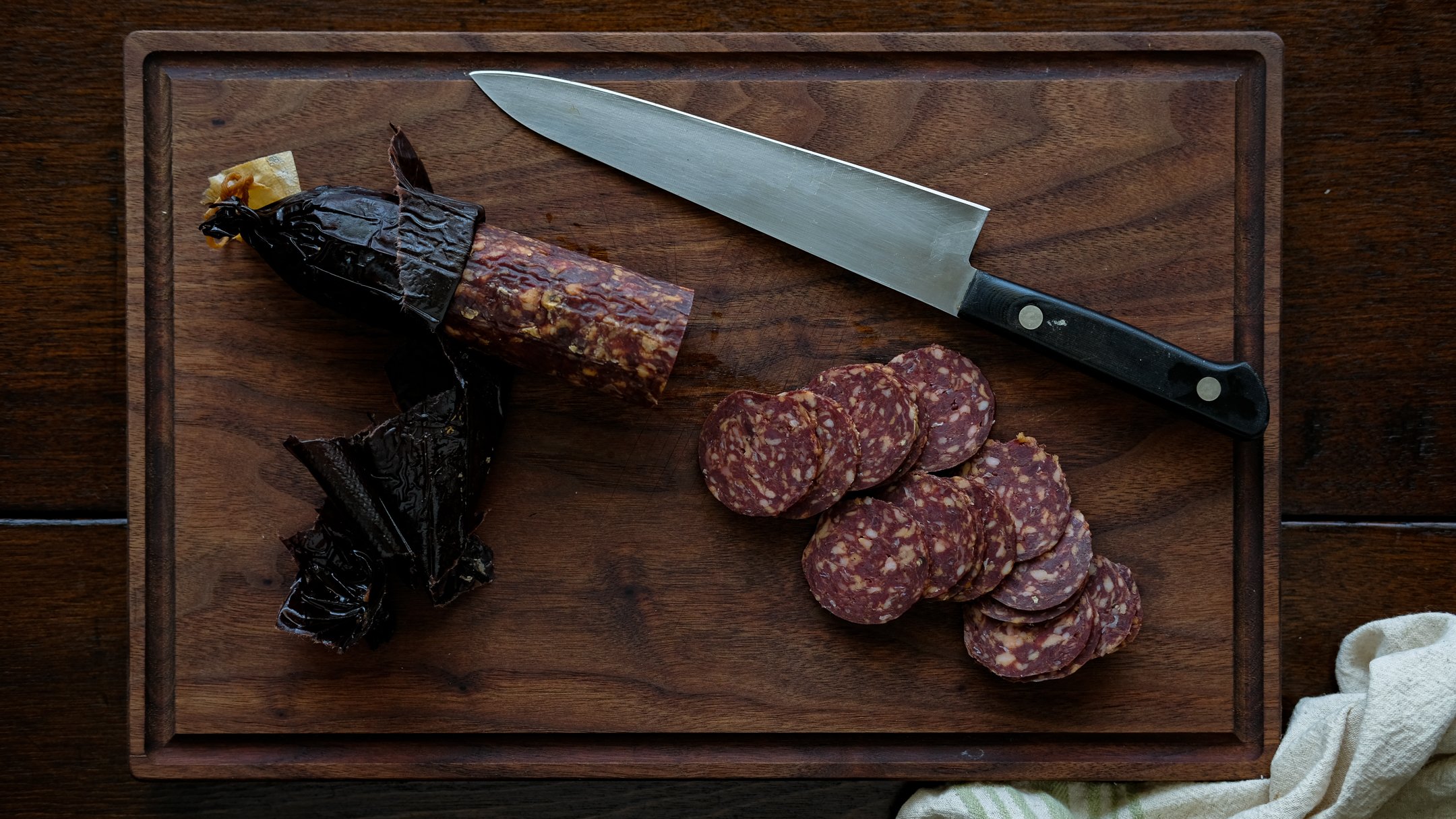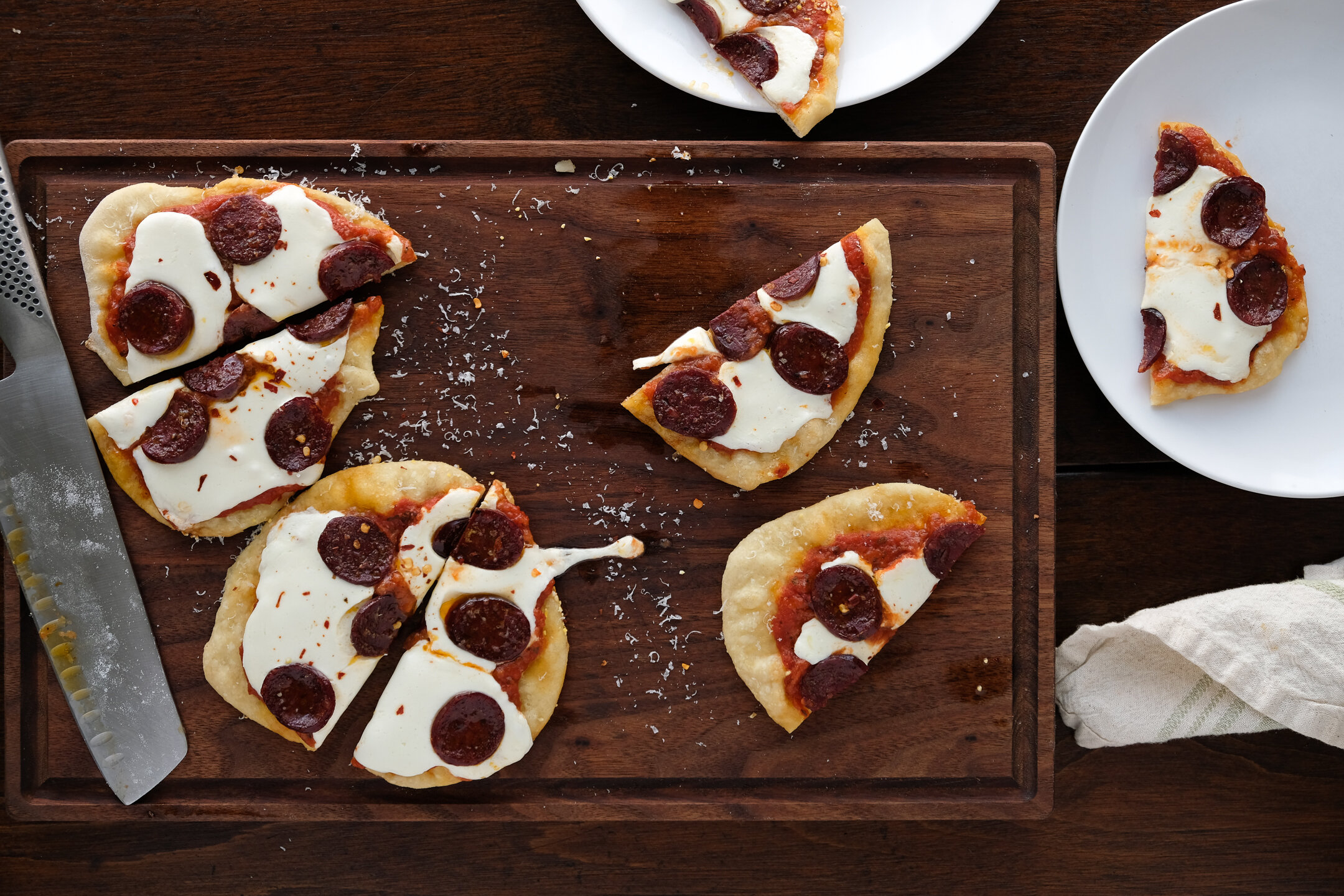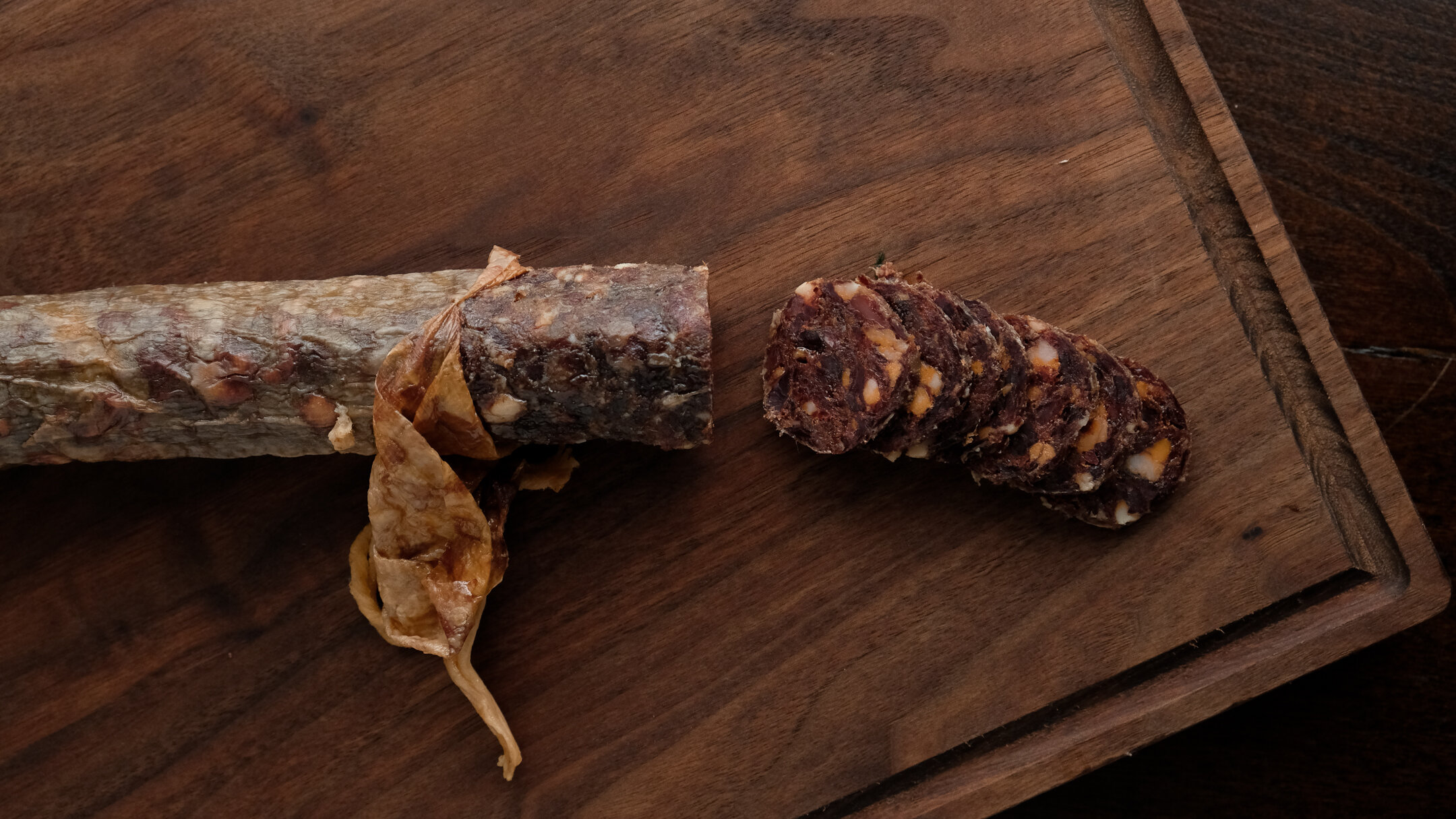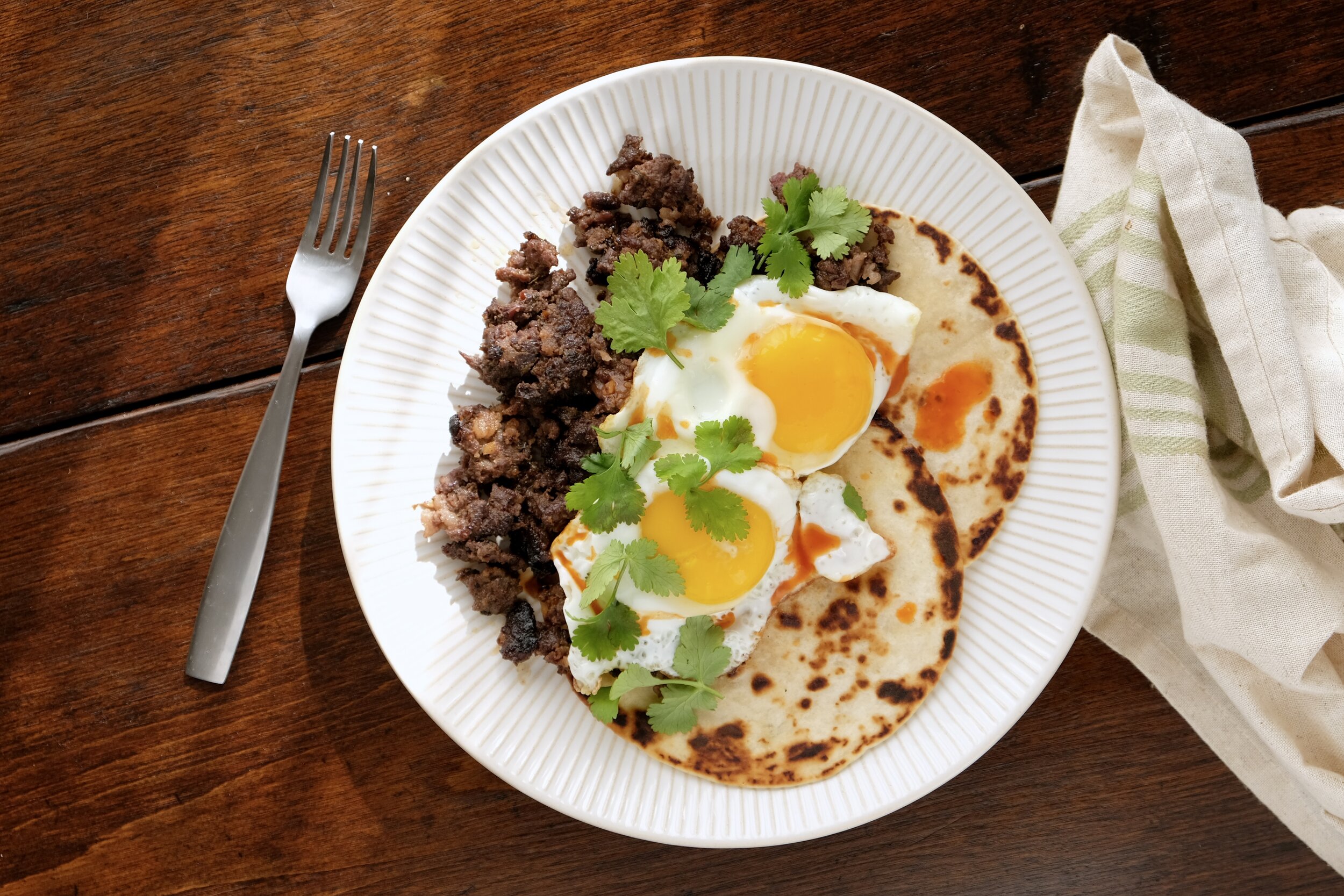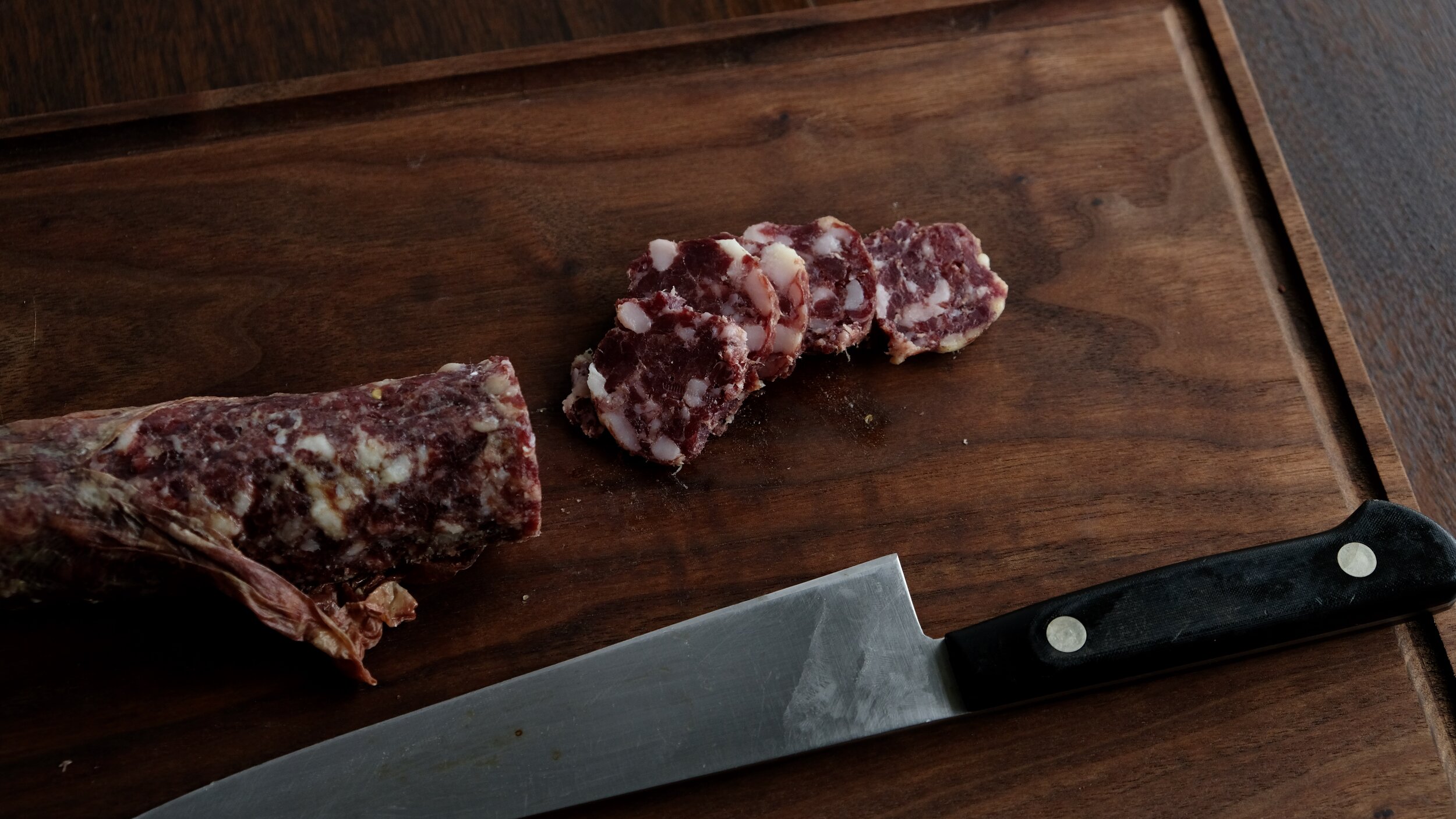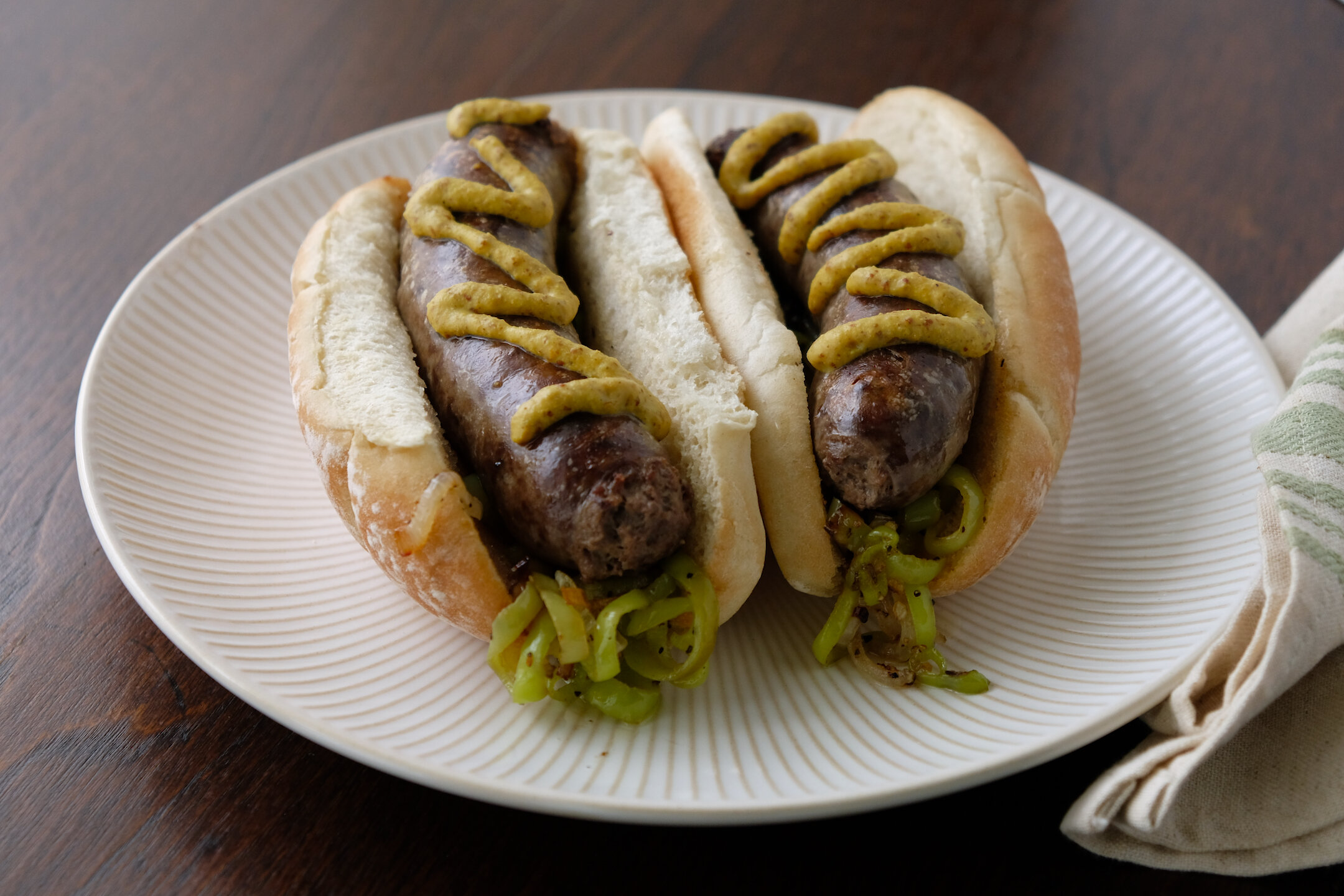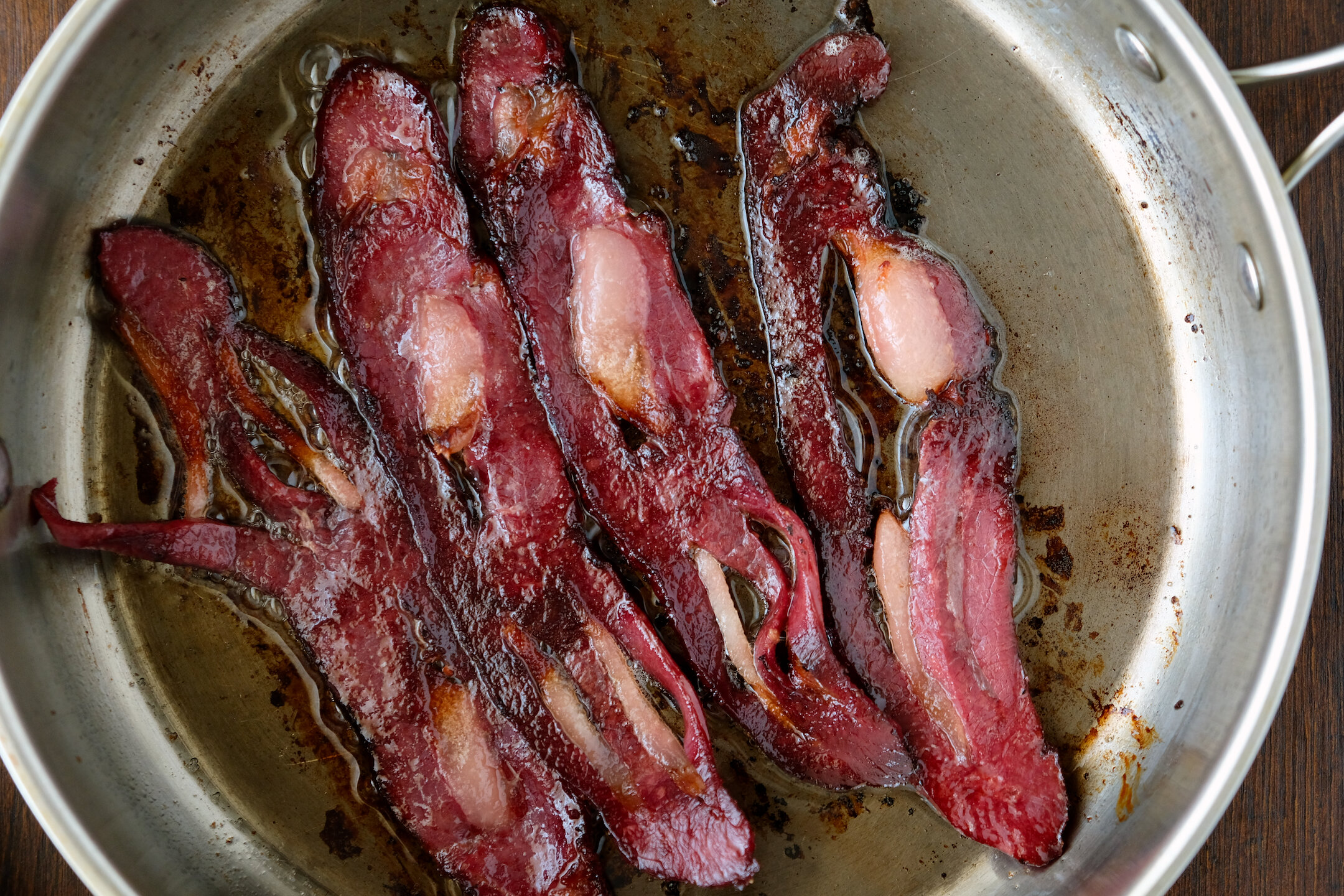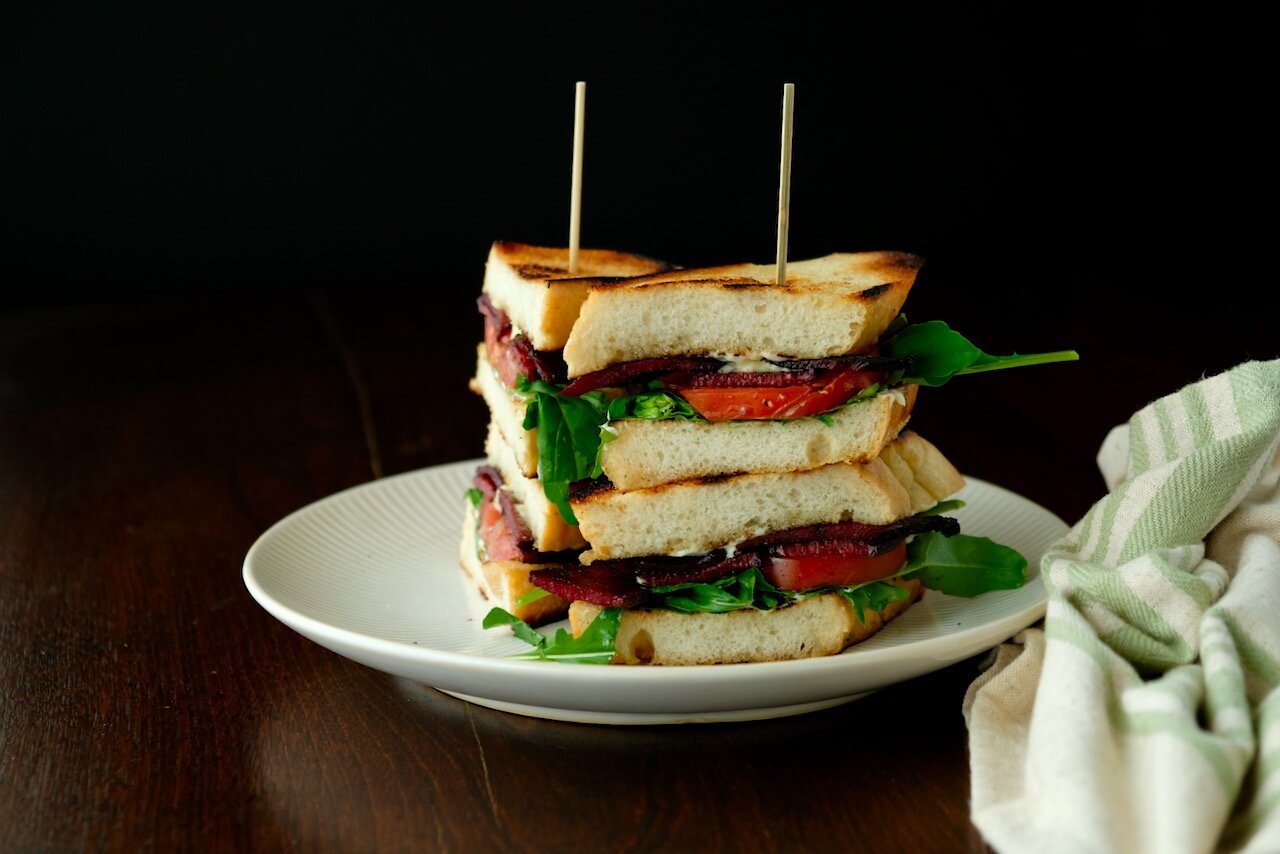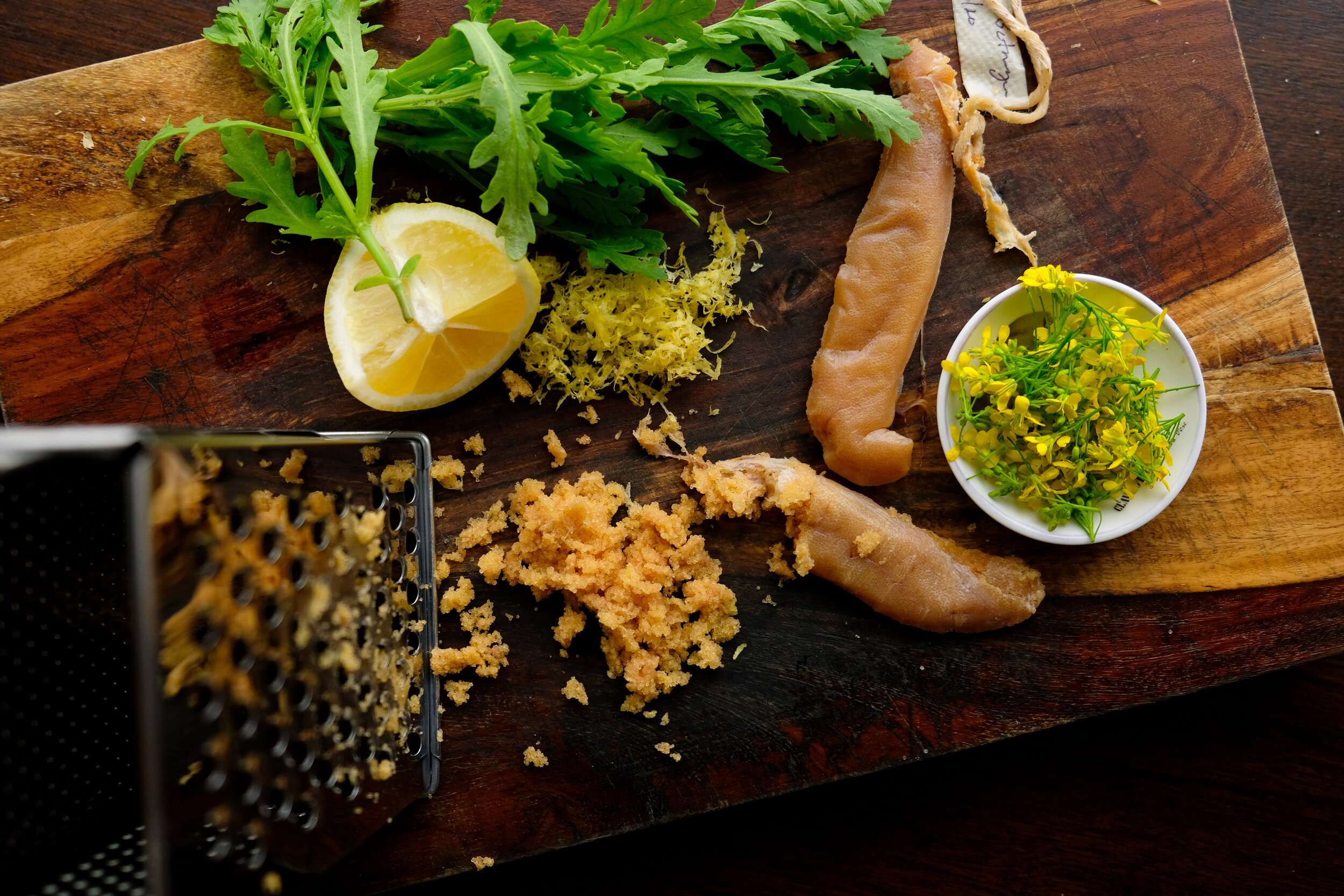Goose Neck Andouille

Stuffing sausage into a deboned goose neck is a little bit metal. It might seem over the top, but if you can get past the visual, it makes complete sense from every angle. Rachel and I try to use as much of every animal we take as we can. We also love the taste of waterfowl fat, and we think that there aren't too many things much tastier than crispy duck or goose skin.
Using the neck of a goose as the casing for this smoked sausage combines all these things- the skin, the fat, and the utilization of parts usually tossed aside. It also highlights something beyond taste: the visualization that our food, and all food for that matter, was once alive. Both of us spent a career in the restaurant industry, where we were the middlemen for people’s consumption. There were countless occasions where we were reminded that the average person doesn’t want to be reminded that their food was once a living, breathing creature.
I’ve been asked to debone steaks, take heads off of whole roasted fish and shrimp, de-shell lobster, etc. It’s disappointing that a person could be perfectly fine with eating something, but not want to be reminded that it was once a living thing. But it comes as no surprise. Most people are completely cut off from any part of the food chain- food is just something that shows up after you order it, or comes prepackaged, pre-cut, no mention that it was something once living. It’s easy to not think about where, what, how it came to be.
Hunting, gardening, and working on farms has shown me that everything we consume is living, wants to live, and we take that away from whatever it is that we eat. There is no way around it, not for us or any other creature on earth. Everything living is consuming something else, and everything is benefiting from the death of another in some way. This might seem grim, dark, or overly moody, but I don’t see it that way. It’s a reminder that we are no different than any other living thing in our basic needs. Life needs life, and it’s not right or wrong. It's just how it is.
Back to this recipe. This sausage is tasty in its own right, and you could technically cut the head off the goose or use pork casing, but you’d be missing the point. I like to remind myself, and the people I serve, that their food was once alive, it had a face, and it didn’t want to die, just like everything else in this world.
Aside from the dramatic presentation and philosophical undertones, if you have ever cased sausages before, this dish is no different. The only tricky parts are plucking the neck and head (waxing works well) and getting the neck out. We roll the skin back towards the head and sever the neck as close to the skull as we can. Use a bird that doesn’t have its neck shot up too bad. Necks from larger ducks work great as well.
Once stuffed, tie off with twine and smoke. To serve, we bring it up in a cold pan and rotate to evenly brown and crisp the skin. Cut crosswise to serve.
Goose Neck Andouille Sausage
These ingredients are measured by percent weight, not volume, to make them easy to scale to the amount of meat you are working with. Weigh the meat you would like to use, and then do the math to figure out how much of each of the other ingredients you will need by percentage.
Ingredients:
Goose necks, deboned (~3 per pound of meat)
Goose meat (skinned, deboned, trimmed of thick tendons)
35% pork fat, cubed
2.5% salt
0.4% instacure #1
0.6% cayenne pepper
0.6% paprika
0.06% thyme, fresh, minced
0.06% nutmeg, ground
0.06% clove, ground
0.06% allspice
0.2% mustard powder
9.5% onion, diced
1% garlic, fresh, minced
Method:
Weigh the meat you are planning on using (in grams). Use that weight to calculate the amount of the remaining ingredients. Mix all ingredients, cover and refrigerate overnight.
Grind mixture through fine die. Using paddle attachment on a stand mixer on a low setting or wooden spoon, mix for 1-2 minutes until the meat is tacky.
Stuff into goose necks, use twine to tie off the end.
Smoke at 185-200F for 90-120 minutes until internal temperature reaches 140F.
Allow to cool to room temperature before covering or wrapping for storage.
To serve, lightly render and brown the skin, starting with a cold pan. Rotate often to evenly brown the neck. Cut crosswise and serve as-is on a charcuterie board with spicy mustard.






